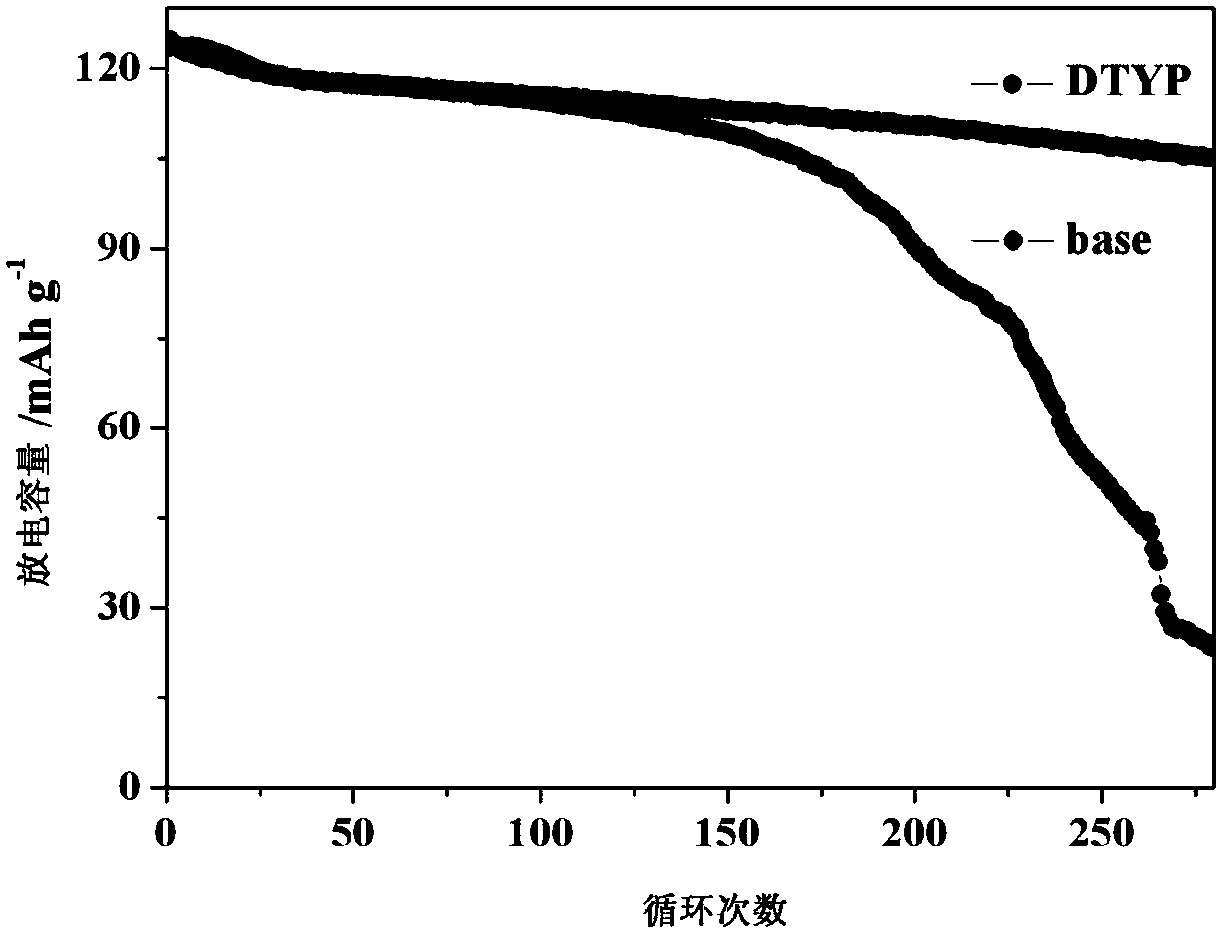A kind of high voltage functional electrolyte and its preparation method and application
An electrolyte and high-voltage technology, which is applied in the manufacture of electrolyte batteries, organic electrolytes, non-aqueous electrolytes, etc., can solve the problem of unstable spinel lithium nickel manganese oxide material structure, decreased electrochemical performance of batteries, and changes in the morphology of positive electrode materials, etc. Problems, achieve the effect of room temperature and high temperature cycle performance improvement, inhibition of further contact, and inhibition of surface activity
- Summary
- Abstract
- Description
- Claims
- Application Information
AI Technical Summary
Problems solved by technology
Method used
Image
Examples
Embodiment 1
[0032] (1) Mix the cyclic carbonate solvent ethylene carbonate (EC) and the linear carbonate solvent ethyl methyl carbonate (EMC) at a volume ratio of EC:EMC=3:7, and use molecular sieves, calcium hydride, and lithium hydride to purify Remove impurities and water to obtain a mixed solvent;
[0033] (2) At room temperature, the conductive lithium salt LiPF 6 Dissolve in the solvent obtained in step (1), the final concentration is 1.0mol / L, and stir evenly to obtain a common electrolyte;
[0034] (3) Add diethyl (thiophen-2-ylmethyl) phosphate (the reagent is purchased from Adamas, the purity is greater than 98%, and is used without further purification) in the common electrolyte prepared in step (2), two The dosage of ethyl (thiophen-2-ylmethyl) phosphate is 0.25% of the mass of the electrolyte to obtain a high-voltage functional electrolyte for lithium ion batteries.
Embodiment 2
[0036] (1) Mix the cyclic carbonate solvent ethylene carbonate (EC) and the linear carbonate solvent ethyl methyl carbonate (EMC) at a volume ratio of EC:EMC=3:7, and use molecular sieves, calcium hydride, and lithium hydride to purify Remove impurities and water to obtain a mixed solvent;
[0037] (2) At room temperature, the conductive lithium salt LiPF 6 Dissolve in the solvent obtained in step (1), the final concentration is 1.0mol / L, and stir evenly to obtain a common electrolyte;
[0038] (3) Add diethyl (thiophen-2-ylmethyl) phosphate (the reagent is purchased from Adamas, the purity is greater than 98%, and is used without further purification) in the common electrolyte prepared in step (2), two The consumption of ethyl (thiophen-2-ylmethyl) phosphate is 0.5% of the mass of the electrolyte to obtain a high-voltage functional electrolyte for lithium ion batteries.
Embodiment 3
[0040] (1) Mix the cyclic carbonate solvent ethylene carbonate (EC) and the linear carbonate solvent ethyl methyl carbonate (EMC) at a volume ratio of EC:EMC=3:7, and use molecular sieves, calcium hydride, and lithium hydride to purify Remove impurities and water to obtain a mixed solvent;
[0041] (2) At room temperature, the conductive lithium salt LiPF 6 Dissolve in the solvent obtained in step (1), the final concentration is 1.0mol / L, and stir evenly to obtain a common electrolyte;
[0042](3) Add diethyl (thiophen-2-ylmethyl) phosphate (the reagent is purchased from Adamas, the purity is greater than 98%, and is used without further purification) in the common electrolyte prepared in step (2), two The amount of ethyl (thiophen-2-ylmethyl) phosphate is 1% of the mass of the electrolyte to obtain a high-voltage functional electrolyte for lithium ion batteries.
PUM
 Login to View More
Login to View More Abstract
Description
Claims
Application Information
 Login to View More
Login to View More - R&D
- Intellectual Property
- Life Sciences
- Materials
- Tech Scout
- Unparalleled Data Quality
- Higher Quality Content
- 60% Fewer Hallucinations
Browse by: Latest US Patents, China's latest patents, Technical Efficacy Thesaurus, Application Domain, Technology Topic, Popular Technical Reports.
© 2025 PatSnap. All rights reserved.Legal|Privacy policy|Modern Slavery Act Transparency Statement|Sitemap|About US| Contact US: help@patsnap.com



